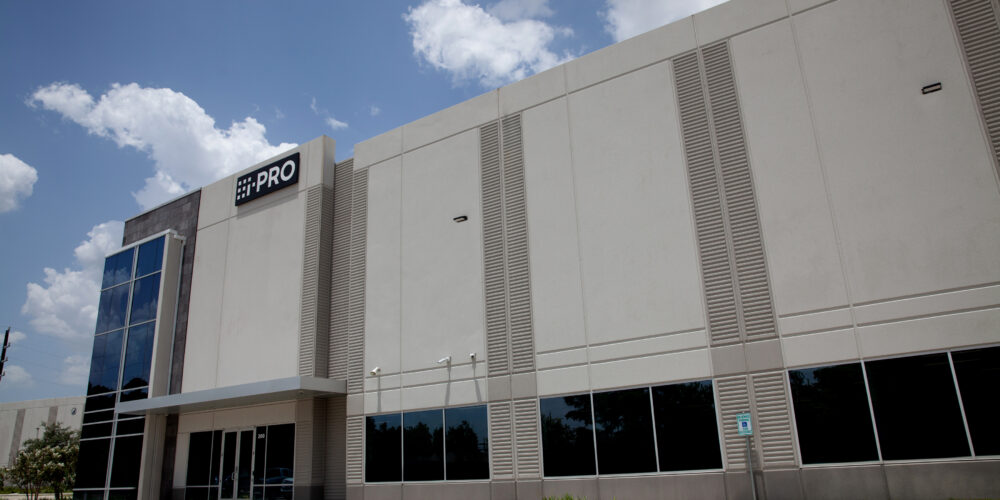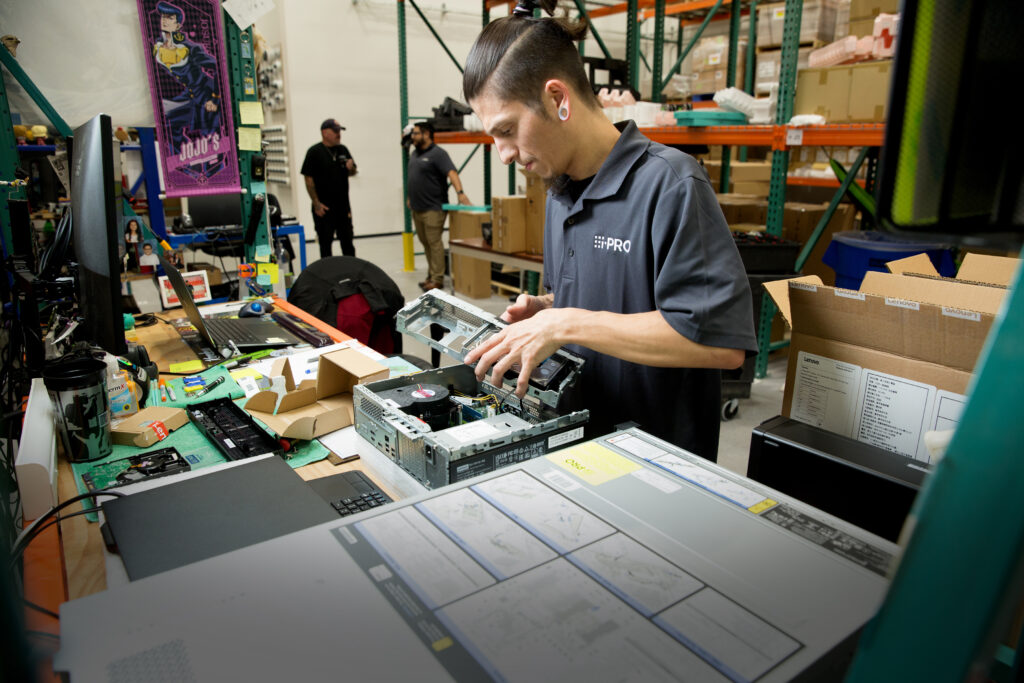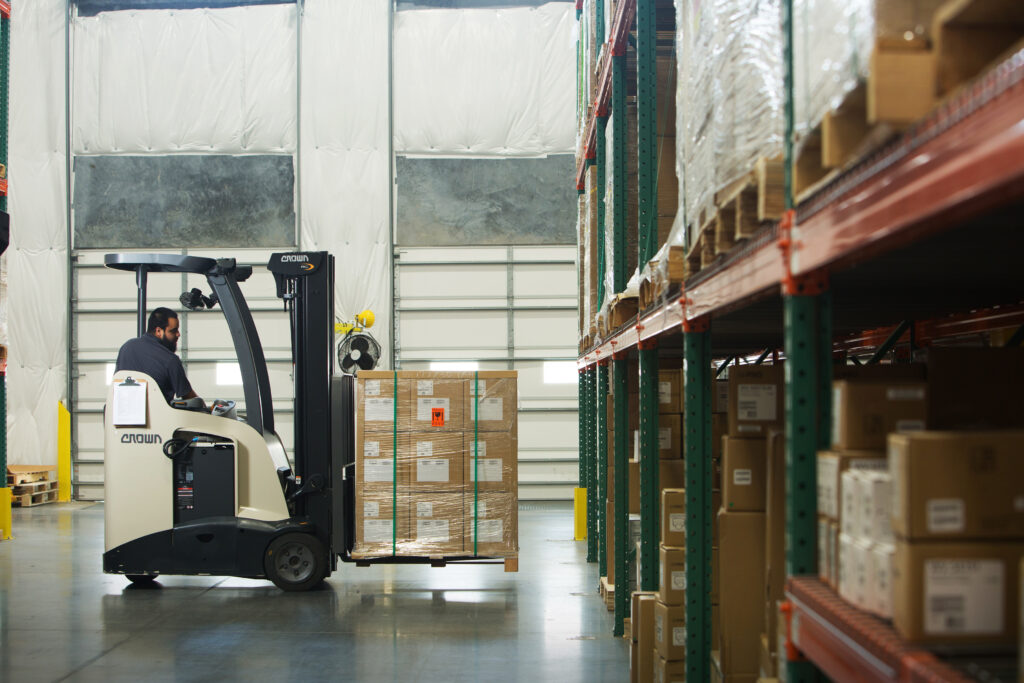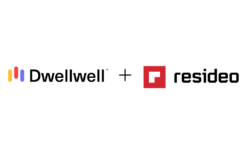i-PRO Prioritizes Products & Partnering As It Forges Its Own Identity
Lost during the pandemic was rebranding of Panasonic to i-PRO for the video security surveillance, public safety and medical imaging markets.

Whoever coined the phrase “you can’t teach an old dog new tricks” would have likely rethought it after encountering i-PRO.
A 2019 spinoff from storied Japanese electronics giant Panasonic, which was founded 100 years prior, i-PRO has been shedding and shattering constraints that had come to hinder the diversified company’s U.S. security and surveillance business, while continuing to honor and leverage its parent’s powerful legacy and deep resources.
After many years being renowned as a pioneer and leader in ruggedized and highly reliable commercial CCTV cameras and systems, Panasonic saw its market share erode as its entrenched analog-based technologies lost ground to networked IP-based video surveillance devices and related solutions.
Suddenly, the security market was moving faster than the former trendsetting manufacturer could manage. On top of that, shifting to an end user-focused, vertical markets sales model proved ill-advised, alienating many integrators, and further hamstringing the company.
“I was overseeing the channel in a vertical world, so it was a bit frustrating. We tried to pride ourselves on being more of a solutions provider, so it was somewhat disruptive to the channel,” says i-PRO Americas President Bill Brennan in an exclusive interview with SSI.
“I really am proud to see the change,” he says. “It’s not easy to change a 100-year-old company. A lot of people came from Panasonic, but to see that collaboration and teamwork effort is truly inspirational.”
The independent i-PRO is also allowing the business to be nimbler, shorten R&D product cycles and become more competitive.
Encompassing security, public safety, medical and industrial applications, i-PRO introduced a staggering 100 new products to coincide with this year’s ISC West show, making up for the time lost when the company had planned a splashy debut that was derailed when the pandemic caused cancellation of ISC West 2020.
SSI spoke with Brennan, whose association with Panasonic began in 1990; i-PRO Global Chief Marketing Officer Hiroshi (Huey) Sekiguchi, a 25-year veteran; and Director of Product for i-PRO Americas Adam Lowenstein, who came on board in 2015.
They share the dramatic improvements partners throughout the security and video surveillance channel can expect to experience as the brand shows off its new tricks and anticipates an exciting future.
In a nutshell, please explain the rationale, process and steps going from Panasonic to the i-PRO branding.
Bill Brennan: It was quite an undertaking and a lot of transition. In October 2019, we announced we were going to become an independent organization. When we were one B2B company under Panasonic, we all followed behind Toughbook. That’s where most of the investment and development was made, and investment on the security side was lacking.
Secondly, Panasonic has an incredible presence in Japan, and it is truly a different market than the U.S., not only from a product set but also overall operations. We still operate a lot through Panasonic there. In the U.S., we’ve always been a channel-centric product.
I have to credit Panasonic leadership, which came to us and said, “What do we need to do to be successful in the U.S.?” It began right away, during the timing of NDAA compliance. Very few people recognized that we were very quick to re-engineer our product and make sure we were completely NDAA compliant. That was the first step. The second step was our manufacturing, looking to become not just NDAA-compliant but TAA-compliant.
We were under a shared resources agreement and still used the infrastructure of Panasonic when we became an independent brand in 2019. As of April 2022, we are truly independent. That meant we had to increase our overall infrastructure. A bit disruptive, the transition. We are now proud to say we’re a completely separate organization. We still operated under Panasonic for the first two years of our operation under a shared agreement. A lot of heavy lifting, a lot of new product development.
We fell behind the market for some time. We didn’t have as robust a product line as we needed to compete here in the U.S. We relied very heavily on our Video Insight software [acquired in 2015] and everything to get us through as we brought our new product.
Proud to say we have launched more than 100 new products since our inception as a new organization. The other thing too was, under Toughbook, we started all of these vertical teams going toward end users. i-PRO does not compete with our integrators. We embrace our integrators and provide whatever is the best solution for the end user.
We are very committed to our comprehensive solution but have also developed an open strategy. We embrace third-party software. Under Panasonic, we turned our back on the market. I credit our team for keeping that bridge with Genetec, Milestone and others when Panasonic was really striving to become a comprehensive solution provider. We have to make sure we are best-of-breed across various verticals and embrace open.
Our goal is to be the best hardware set on platforms like Genetec and Milestone. Our goal is to provide proactive security, not reactive, stopping things from happening and not looking back and saying, “What happened?” We are very much committed, especially in the K-12 education market.
What have been the challenges getting the new branding top of mind for integrators?
Brennan: Talk about timing! We began as an independent company right in the midst of the horrible pandemic. That did hinder us getting the word out. As you know, Panasonic has had such a strong name in the security industry but was still very heavy analog as the world was transitioning to IP. What was never in question was the quality of the product and reputation for being very rugged. We want to make sure that is retained.
Panasonic was very rigid and sometimes difficult to do business with. We want to get the word out that we still have that foundation of a rugged, reliable product, but now a new product and an organization that’s much more flexible and easy to do business with. We want people to understand that’s who i-PRO is and say, “We know and trust the Panasonic brand. Let’s investigate to see how much they’ve changed.”
Unfortunately, when we were gearing up for ISC West 2020 as a new organization, it was canceled that year. But that turned out to almost be a blessing because, as opposed to saying all the things we were going to do, when we were able to eventually come to ISC with all we did with NDAA compliance, all the changes and new products, it worked out pretty well.
However, it did impact our ability for people to truly understand who i-PRO was. Even though we always had that brand connection with the Panasonic i-PRO Extreme, it was still, and remains, a challenge.

Hiroshi Sekiguchi: We have used the i-PRO name since the early 2000s. We had dealer partners, we had end customers calling us, the i-PRO certification, the i-PRO program. Our IP or digital cameras were referred to as the i-PRO cameras.
When that name was chosen, it was because it had market awareness and recognition. We’re really the best of two worlds as the new i-PRO company. We get to continue to leverage the excellent and strong legacy of innovation, quality, manufacturing, environmental consciousness, everything that we get under Panasonic.
Now we get the opportunity as a new company to step back and say, “All of our profit, all of our investment goes back into our business and we get to develop the destiny of what our business is going to be.”
We are an over 60-year-old organization with a foundation that’s the strongest, really the creator of this industry. Now we have an opportunity to be reborn and take this into the next generation, the next 60 years and greater for who we know we can be for this market.
What is i-PRO’s process to conceive, develop and bring a product to market? Also, where does getting feedback from the integrator or end user fit into it?
Adam Lowenstein: It’s a combination of market research by meeting with our customers, partners, and technology alliance partners as well as a healthy mix of monitoring cutting-edge technologies out there.
Our engineers in Japan are highly encouraged to innovate new solutions, and that’s where the R&B is primarily headquartered. We have an annual meeting where they showcase all the newly generated ideas and we globally then get the opportunity to vote on what we see as the most compelling opportunities for cutting-edge tech in each of our regions.
When it comes to our software solutions like the Video Insight VMS and our MonitorCast access control, they are headquartered in the Americas. Our Japan-based product management syncs very closely with my team here for the Americas as well as EMEA and APAC.
As Bill mentioned, when we spun out of Panasonic, we knew that there were gaps in our lineup. We chose not to just bring a product to market that was a me-too. On every product, it was what could we do to make it better? How could we improve? That spirit continues on.
Now that we’ve filled the majority of our lineup, it’s what’s next? What are those next things that will make a difference for our vertical markets? It’s about starting with early prototypes, testing those in front of the market, getting that feedback and driving that through product development.
Our product R&D cycle has been shortened significantly. That’s one of the challenges we had in the past, 24 or even 36 months of development, which is too late for that product to come out. We’ve shortened that down to 12 months or less as much as possible.
Brennan: As a new organization, our chief product officer from Japan is now based here in the U.S., focusing heavily on the needs of the Americas. Also, Panasonic’s quality is spilling over to i-PRO through sharing components across brands, allowing us to come to market faster with new product.
Shortening lead time and having shared components has a ripple effect throughout our manufacturing. Previously, Panasonic would always build a product from the ground up, which is why it would take so long. This new kind of design is not only faster but will help us be much more competitive in the market.
Sekiguchi: Additionally, it’s about the process that Panasonic and other large corporations have that require a lot of approvals to get something done. It takes about 12 to 15, 24 months to get a new product out. That has been reduced to less than 50% of the time because the decision-making process has been changed very quickly. Once we hear something is a go, it’s a go! We don’t get bogged down. Since 2019, we have new products coming out that could not have been done through Panasonic. It’s all based on the two strategies of open technology and time-based processes.

You mentioned Genetec, which has been among the progressive vendors where it comes to cybersecurity hardening. How is i-PRO approaching that?
Brennan: We have made a very strong commitment and investment on the cybersecurity side. We are not only focused on becoming a top cybersecurity product but also organization. In more and more RFPs and bids, companies are asking to ensure the supply chain is secure.
Our product is handled with a great deal of care from the minute it leaves our factory until it gets installed for the end user. We’ve hired a very strong cybersecurity team and our product has the highest level of cybersecurity.
Sekiguchi: We worked with Symantec back five years ago. That’s where we started to have a third-party certification implanted into devices where it was manufactured in our factory. We still have that, so it’s not self-certified. The third-party testing makes sure our ports and any other potential weaknesses are not vulnerable.
Keeping edge devices safe also relates to our products’ secure global design certificates. And the Ambarella chipset is very important in that we’re not using anything noncompliant with NDAA. We have Secure Element now implemented as well as end-to-end encryptions. We have SRTP [Secure Real-time Transport Protocol] as well, like Axis or Bosch.
We work on different end-to-end encryption technologies, both on video and metadata. “Made in Japan” is an important key term right now for i-PRO, that we’re bringing our manufacturing back to Japan. It was a long road. We went to China, we went to Cambodia, but thanks to the weaker yen, stronger dollar, a lot of manufacturers are coming back to Japan.
Lowenstein: PSIRT is an important acronym within the business that stands for i-PRO’s Product Security Incident Response Team. This team is dedicated to monitoring our products, proactively safeguarding our solutions to make sure any unauthorized access or similar challenges are covered.
We have to anticipate the potential for a leak or a breach. Our PSIRT works very diligently to be ready rather than reactive when it comes to resolving those types of situations.
Brennan: We want to ensure too that we’re educating the channel. We’re beginning a series of cybersecurity education with our partners, helping them address the needs and concerns of end users while also bringing third-party solutions.
For example, Adam established a very strong relationship with Extreme Networks, which has just been added to the ecosystem. We have a very similar philosophy, and they play in the same verticals we do in municipalities, education. We take cybersecurity throughout the solution set very seriously.
Looking at the 100-plus products introduced earlier this year, what are some highlights among them?
Lowenstein: The majority of them were cameras. We continue to offer an embedded recording platform under our ASM software. We are also continuing to make new software releases for our VMS and our access control platforms. There are a couple of those products I want to mention.
Our dual-sensor camera we brought to market earlier this year for ISC West as well as our multidirectional-plus PTZ, sometimes called a combo camera with a multisensor and PTZ all in one. Those filled gaps in our lineup.
Under Panasonic, it was difficult to get the commitment for the R&D to build those products because of how unique they are. Internally, we call them more compound, meaning they’re difficult products. They take more time, they take more molding and they take a higher level of investment.
Under i-PRO, we quickly moved forward with those products because we knew they were becoming a growth opportunity in the Americas.
Interestingly enough, our counterparts in EMEA and APAC, while they were interested in those products, weren’t expecting the sales volume. They’re now seeing them grow quite rapidly in their regions. We are looking to continue the momentum and theme of what we rolled out for ISC West, our All Eyes on i-PRO campaign.
We can now offer an end customer between one and five lenses, depending on which product set they go with. That’s important for ease of installation and providing the best situational awareness at the end customer’s monitoring facility. i-PRO has also introduced the industry’s first 4K AI dual-sensor camera. You’re going to continue seeing those kinds of firsts when it comes to our new product roadmap.
Sekiguchi: With competitors having similar products, we had to bring out something new and different. Combining AI with forensic search is an example. We study the market and know we can’t just copy and paste things others are doing already.
Edge analytics that runs on Genetec and Milestone and other major VMSs is really helping us grow the business. We realize it’s about more than video management, it’s data management.
At some point, VMS is going to fade out because you don’t need to manage video, you need to manage data. Why do you need to manage data? Because ultimately, we want to keep this world safe by sensing things before they happen.
Data has to be analyzed to drive alerts, in which case operators don’t even need video. Of course, human beings still have to verify with their ears and eyes. At the last minute, we’ll pull the video from the camera, not the Cloud or on-prem recorder, for a short video clip that verifies it’s a real incident.
Managing video doesn’t make sense in the future. It’s more about managing data to prevent things before they happen. That’s what we at i-PRO want to drive; not being just a camera manufacturer but being ahead of the new IoT world with devices that gather data at the endpoint.

Expanding on that, what is the mindset regarding AI? What’s your roadmap look like?
Sekiguchi: The term AI can be very confusing or even deceptive. For us, it’s more about analyzing data using video on the edge. We just call it edge AI, which is definitely a strategy we’re taking forward. We don’t need any more cameras. That’s just taking video fees and then having human interaction. Or maybe you may have analytics at the backend, but you have to pull all the streams through the network, through the Cloud. It’s not a very scalable approach.
Consider autonomous driving. Who decides to drive left or right or put on the brakes? They’re not communicating through 5G or 6G or 7G networks. The car itself decides you need to turn or brake. A lot of things are moving toward the edge so it doesn’t always have to be relayed through networking communication to make that decision.
When it comes to technologies like this, security is one of the industries that responds very late. We want to be sure we are ahead of it, because at some point you’ll be swallowed just like the smartphone swallowed digital cameras. Our phones also replaced the Walkman.
Security cameras are not really appreciated by end customers. It’s just additional costs. It’s a cost against business risks. To be honest, nobody wants a camera. At some point, nobody’s going to drill a hole in the wall and have cabling and have an ugly thing in your room, which designers hate. It will be swallowed up. It may be a door, lighting, windows, at some point you don’t need a camera.
It’s just a matter of time before many things in this world designated for just one mission are going to fade out. We at i-PRO are looking forward to that, not that we want to disrupt the security camera industry but if we don’t someone else will. We have another business unit working on that side of it.
Things are going to come very quickly because AI is becoming very smart. We want to be sure we’re not just focusing on the traditional, “Oh, what’s next camera model?” Yes, we listen to the market, but at the same time we are collaborating and looking at changes that may come very fast to transform the security industry.
Brennan: I agree that it’s not going to be the typical video surveillance industry in the future. It’s a lot of business intelligence, it’s more of a purpose application-built data grab. Video is data.
What are some examples of how i-PRO is helping integrators succeed?
Brennan: We learn a lot from integrators in our channel and are here to support them. We love these types of conversations because they give you greater insight into the future. They’re out in front of end users all day.
We work with end users, but everything goes back to the channel. The message to the channel is, “Please re-engage with us. Come learn about our organization.” We understand the industry. It’s a construction industry. You need to get things done on time and on budget.
We’ve implemented a lot of tools, like our EZ-2 Portal, that’ll really assist and help the integrators with system-built designs. We’ve invested a great deal of resources into becoming a company that’s easy to do business with.
We are a closed product, meaning you have to be authorized to represent i-PRO because we want to protect our integrators. We are very sensitive in terms of our pricing integrity and helping them and supporting them grow.
We love our integrators, and I’ve been blessed to get to know many of them. We want to create a community of people who embrace and enjoy working with i-PRO. Their priorities are our priorities.
If you enjoyed this article and want to receive more valuable industry content like this, click here to sign up for our FREE digital newsletters!

Security Is Our Business, Too
For professionals who recommend, buy and install all types of electronic security equipment, a free subscription to Commercial Integrator + Security Sales & Integration is like having a consultant on call. You’ll find an ideal balance of technology and business coverage, with installation tips and techniques for products and updates on how to add to your bottom line.
A FREE subscription to the top resource for security and integration industry will prove to be invaluable.








